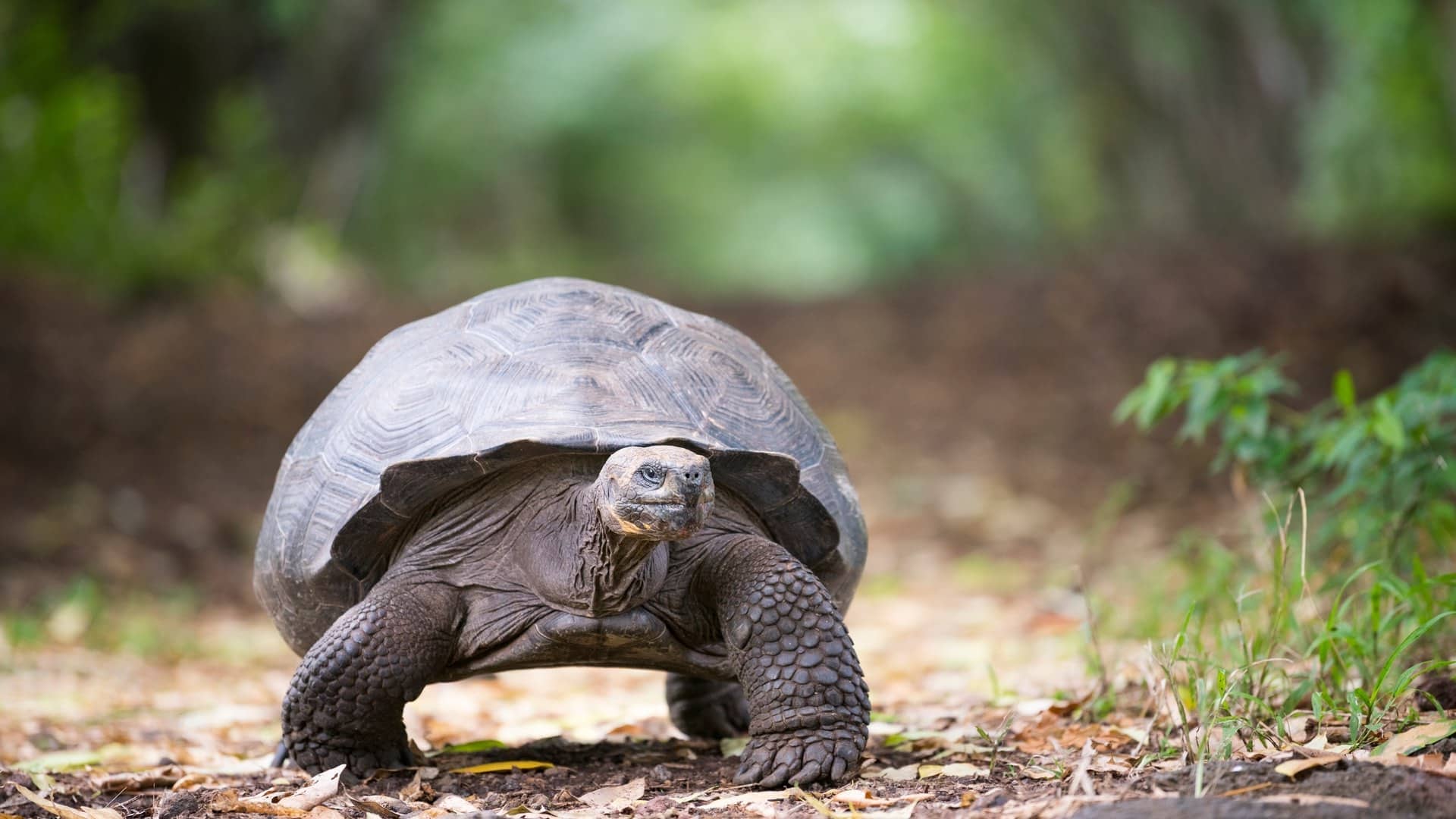I thought I knew how to breathe properly. My years of studying dance at various institutions have all involved tuition on breathing and its relationship with movement and posture. So I was sceptical when I joined my step-sister Octavia’s online breathwork classes – what more was there to learn?
My first class was in lockdown, at a time when many of us felt in a continual state of anxiety. We were guided through various techniques that manipulated the rate and depth of our breathing. It was dynamic and intense, much harder than I imagined. But nothing much happened at first. I started to think that maybe this wasn’t for me.
One of the reasons tortoises live longer than other species is because they breathe at a slower rate
Then, 20 minutes in, a rush of emotion travelled up through my body. Tears streamed down my cheeks. I felt as if something had been unblocked inside me. And once the plug was pulled, the tears kept on coming. Afterwards, I immediately felt clearer and lighter. I was amazed that an hour of conscious and controlled breathing could trigger such a powerful release.
The classes taught me how fast I breathe in my day-to-day life, how shallow my inhalations are and how, in moments of panic, I hold my breath. Since then, I have learnt that many of us breathe ineffectively. An unconscious process that seems so instinctive can, in fact, be done better. As babies we naturally breathe fully and deeply. As we get older, life gets in the way: we tense up and we start breathing from our neck upwards.
Breathwork is growing in popularity as more and more people discover its health benefits. Some assume that it’s a new and modern practice, but most of the techniques are ancient. For years Buddhists have used breathing to reach higher states of consciousness, and it’s also a feature of many Shamanic cultures around the world.
Inspired by my classes, I picked up breathwork expert’s Stuart Sandeman’s new book, Breathe In, Breathe Out. Combining ancient wisdom with modern science, he aims to help readers find self-discovery, healing and transformation through guided breathwork exercises. It’s easy to follow his explanations of how we can restore our breathing – and why we should. If we are stressed, we trigger the sympathetic nervous system, which leads to the release of hormones such as adrenaline. But if we control our breathing, taking slow, gentle and deep breaths, it activates the parasympathetic nervous system – which helps the body relax and deliver more oxygen to our organs. One of the reasons tortoises live longer than other species is because they breathe at a slower rate.
Sandeman says that many of us are ‘dysfunctional breathers’. Is there such thing as a perfect breather? Sadly not. When talking about the ‘ideal resting breath’, he says it should ‘flow in through the nose and begin in your lower torso like a wave rolling upwards’. This feels very strange for ‘chest breathers’ like me, who take shallower breaths higher in the lungs. I’ve learnt that our optimal resting breath is a 5.5 second inhale followed by a 5.5 second exhale. And another tip – when feeling anxious, breath in for the count of four, and out for six.
I’ve noticed my sleep has improved since I started practising breathwork, and my anxiety levels have dropped. But if nothing else, focusing on our breath forces us into the present moment. I wonder if we can look at breathwork like stretching – a gentle exercise we can come back to every day for ten minutes. I’m certainly trying to take this approach in my own life. And if you’re still sceptical and wondering how taking lessons in something we do unconsciously all day can have an effect, try joining a breathwork class and see what happens.







Comments